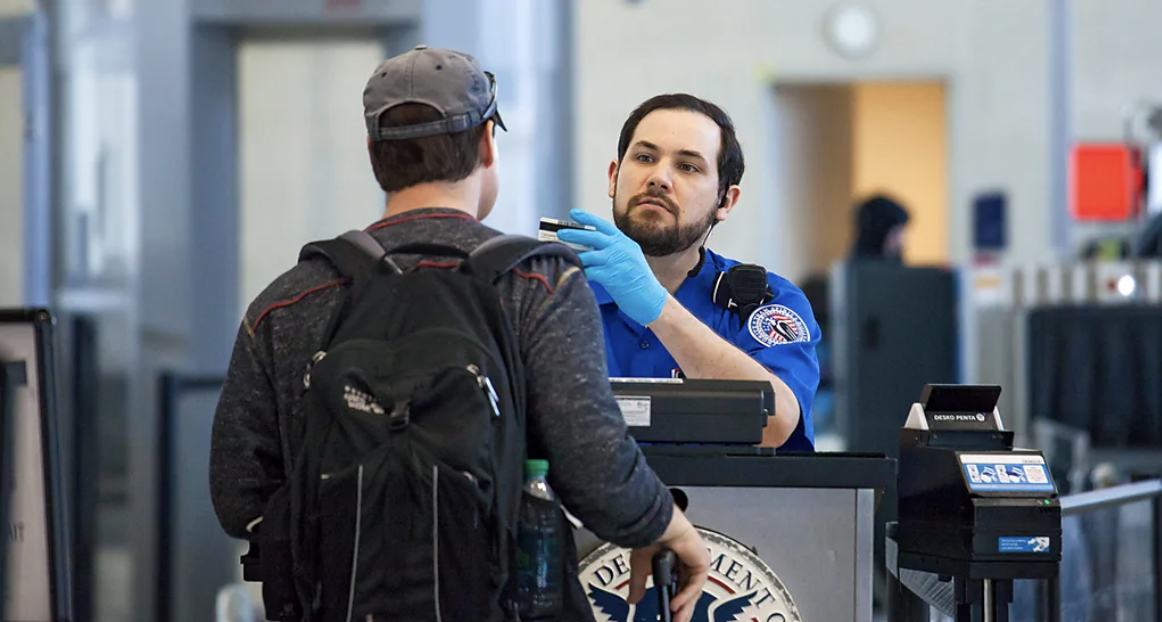

Starting tomorrow, many American citizens and residents will need a new form of ID to board domestic flights.
This week, the US government is set to implement a major change to its air travel policy that has been nearly 20 years in the making.
Starting 7 May, US citizens and residents will no longer be able to use a standard driver's licence or state ID to board domestic flights. Instead, travellers will need to present a REAL ID, passport or other acceptable form of identification at airport security checkpoints.
Here's what you need to know.
What is a Real ID?
The new REAL ID is a federally compliant licence or non-driver ID issued by a state's Department of Motor Vehicles (DMV) that meets new security standards at Transportation Security Administration (TSA) checkpoints. The new IDs look very similar to existing driver's licences or state IDs but are recognisable by a gold or black star located in the top-right corner.
"The Real ID requirement bolsters safety by making fraudulent IDs harder to forge, thwarting criminals and terrorists," Adam Stahl, TSA Senior Official Performing the Duties of the Administrator explained in a statement. "TSA will implement REAL ID effectively and efficiently, continuing to ensure the safety and security of passengers while also working to minimise operational disruptions at airports."
Who needs a Real ID?
All American travellers over the age of 18 will be required to present a REAL ID or another TSA-acceptable form of identification, such as a passport or permanent resident card, in order to board domestic flights anywhere in the US and its territories.
How do travellers get a Real ID?
To obtain a REAL ID, travellers should use this map and click on their home state or territory to determine what specific documentation they'll need to apply. Most travellers will generally need to make an appointment at their local DMV and bring in documents that prove their identity and lawful status. These may include proof of identity and citizenship via a passport, birth certificate or green card; proof of address in the form of utility bills or bank statements; and a social security card.
Applicants will be issued temporary identification while the REAL ID is processed and mailed, which can take several weeks. The cost to obtain the new ID varies from state to state, so it's recommended to check with the local Department of Motor Vehicles.
What happens if US travellers try to board a domestic flight without a Real ID?
American travellers without a REAL ID, passport or other acceptable form of identification will be subject to additional screening and may be turned away and not allowed to board their flights. According to the US Department of Homeland Security (DHS) website, without a REAL ID: "The TSA officer may ask you to complete an identity verification process, which includes collecting information such as your name and current address to confirm your identity."
In addition to a passport, the DHS website notes that an enhanced ID or a DHS-trusted traveller card such as Global Entry may be presented in lieu of a REAL ID. However, the DHS warns that this list is subject to change, so travellers should be sure to double check with TSA to confirm before arriving at the airport.
Following the 9/11 terrorist attacks, the 9/11 Commission recommended the US Congress pass the REAL ID Act in order to establish more stringent security standards for driver's licences and other identification documents. However, the Covid-19 pandemic and opposition from state governments, led to several postponements of the REAL ID rollout since the Act was originally passed.
How this new rule will affect all passengers – not just US citizens
While the rule only applies directly to American travellers, it's believed that anyone travelling within the US may be affected by these new requirements, as longer lines are expected at airport security checkpoints. Travellers are encouraged to arrive early for flights in order to accommodate potential longer wait times and additional screenings, ideally two hours before domestic flights and three hours before international flights.









